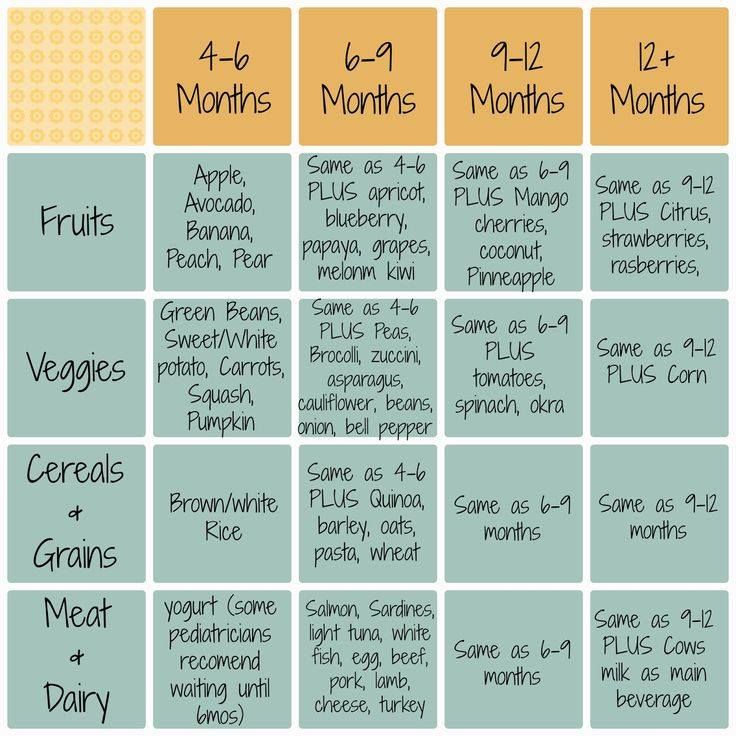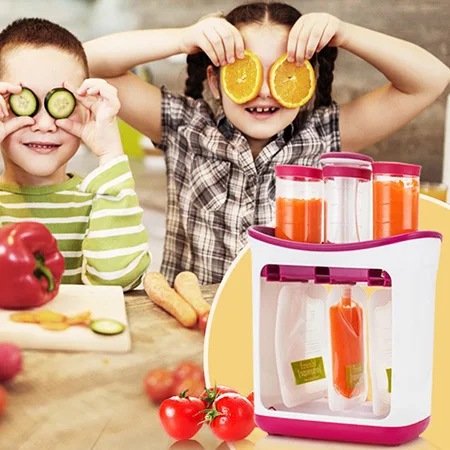What do you need to make baby food
10 Easy Homemade Baby Food Ideas (No-Cook, Super Fast, Stage 1)
Learn how to make the EASIEST homemade baby food recipes (stage 1) for your little one with these super simple no-cook ideas. Plus: I have the best tips for making them ahead and freezing them so you can batch cook and simplify your days!
Homemade Baby Food
As a mom to three kids, I know firsthand how the urge to make homemade baby food can be both exciting and a little daunting. And if you have a busy schedule or other kids in the house, finding the time to actually do it can seem impossible. But, there are so many healthy foods that you can transform into stage 1 baby food purees with hardly any work or special equipment at all!
TIP: I use a regular blender for all of these recipes, so you don’t need to buy a special baby food maker unless you want to.
Baby Food Recipes for 6, 7, and 8 Month Old Babies
These homemade baby food ideas are designed for younger babies who are still eating thinner purees, but you can of course use them for older babies and toddlers too. Each can be served as is, or you can combine more than one together to create new flavors if you’re feeling creative!
TIP: If you want to add fat or protein to any of these fruit or veggie purees, simply stir in a little whole milk yogurt, coconut cream, or Avocado Puree.
Best Way to Make Baby Food
I’ve found that the easiest and most approachable way to make baby food is to simply use a blender. With fresh ingredients and a little water, breastmilk, or formula to thin it as needed, you can easily make your baby meals without investing in equipment you may not use very long.
TIP: You’ll want to start with at least 1 cup of any base ingredient to ensure that there’s enough in the blender to fully blend up.
Tools You Need to Make Homemade Baby Food
To make these baby food recipes you’ll need:
- Blender (you could also use an immersion blender if yours is very strong)
- Water, formula, or breastmilk to thin as needed
- Knife for chopping produce
- Spoon
- Bowls
- Ice cube tray
- Freezer bags for storage
- Baby food storage containers
Stage 1 Baby Food
These baby foods are meant for early eaters as they are typically very thin and easy for a baby to move around in their mouths.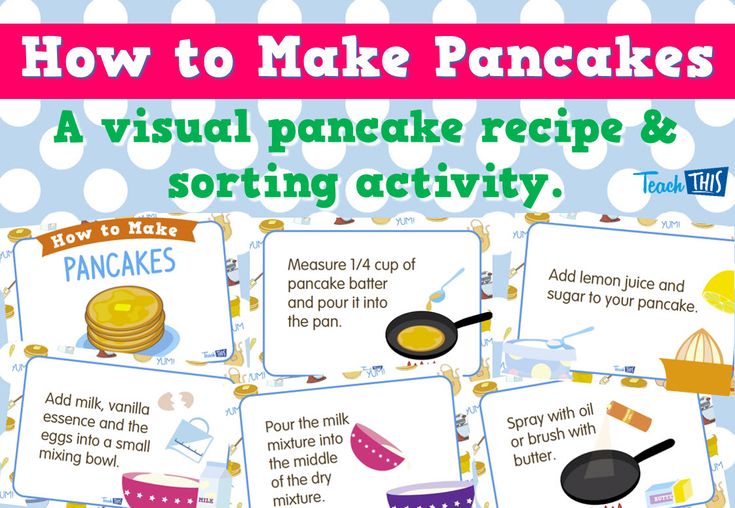 I follow the recommendations to wait until 6 months to start solids, so I personally don’t worry excessively about this distinction as I like babies to experience some texture in their purees. (The ones you find at the store are low allergenic foods and are meant for 4+ months.)
I follow the recommendations to wait until 6 months to start solids, so I personally don’t worry excessively about this distinction as I like babies to experience some texture in their purees. (The ones you find at the store are low allergenic foods and are meant for 4+ months.)
Stage 2 Baby Food
These baby foods are typically a little bit thicker, sometimes include more than one ingredient, and offer a wider variety of ingredients. Most babies are ready for these sorts of purees around 7-8 months, or once they’ve mastered thinner purees. (Again, since I like to do a combined baby feeding approach with both baby led weaning and purees, I don’t worry too much about following the calendar to decide when to introduce these.)
TIP: As a backup to my homemade baby foods, I love the options from Amara Organic Baby Food (paid affiliate link) since you simply need to stir it together with breast milk, formula, or water and it’s ready to serve.
And now, for my ten go-to homemade baby food purees that you don’t even need to cook!
1.
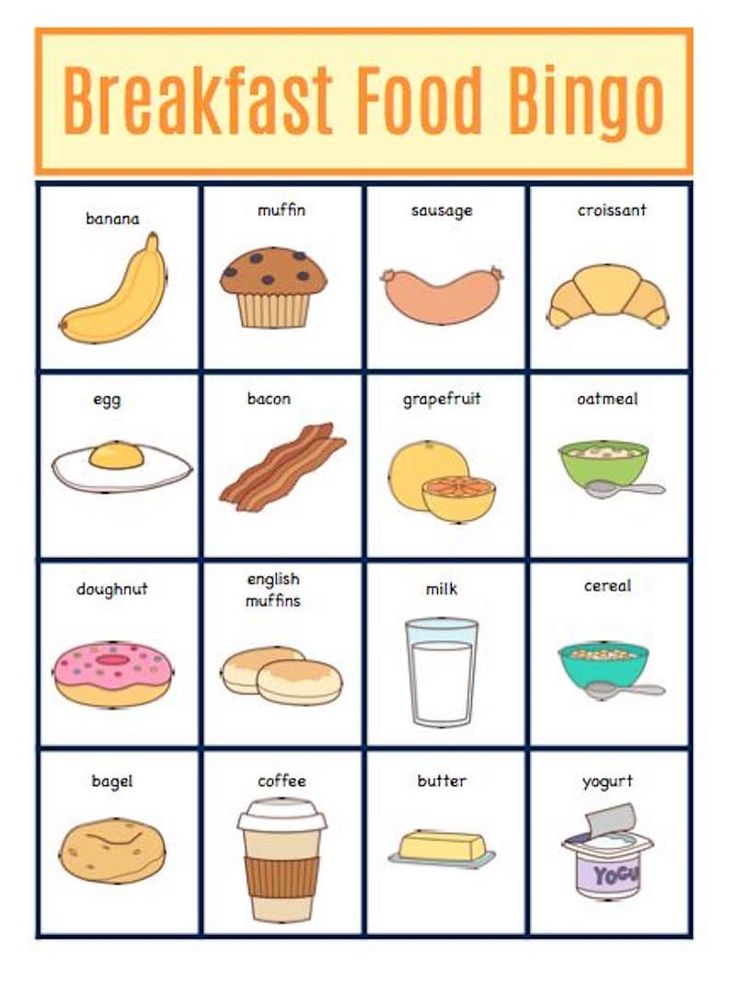 Avocado Puree
Avocado PureeTo make avocado puree for a baby, you just need a fresh avocado, a blender, and some lemon juice if you plan to store it for later. I sometimes even do this with just a fork if the avocado is super soft! It’s a perfect way to introduce a low allergenic food that’s rich in healthy fats.
TIP: Get the full recipe for Avocado Puree here.
2. Bean Puree
Baby’s early foods don’t have to be all one food group and beans are a great food to have in the mix. You can do this easy bean puree with chickpeas, pinto beans, black beans, or even white beans, thinning it as needed with water, formula, or breastmilk. This is a great puree to mix with a little sweet potato or butternut squash.
TIP: Get the full recipe for Bean Puree here.
3. Blueberry Puree
Using fresh or frozen blueberries, this easy berry puree is loaded with fresh flavor and antioxidants. It’s delicious on its own or stirred into plain whole milk yogurt or baby oatmeal. (Note that it thickens up as it sits in the fridge, so you’ll need to stir it well to serve.)
(Note that it thickens up as it sits in the fridge, so you’ll need to stir it well to serve.)
TIP: Get the full recipe for Blueberry Puree here.
4. Kiwi Puree
With a bright flavor, this puree is great for babies who seem to love flavor—and it’s a fun one to make and store for later. You’ll want to make sure that you choose very ripe and sweet kiwi and taste it before you make the puree to ensure that it’s not too tart. (If it seems tart, you can mix with banana or applesauce.)
TIP: Get the full recipe for Kiwi Puree here.
5. Mango Puree
Using fresh or thawed frozen mango, this baby puree blends up in seconds. It’s bright, flavorful, and a great source of immune-boosting vitamins. Taste your mango to be sure that it’s sweet and not too tart. (If it’s tart, you can add Applesauce or ripe Banana Puree.)
TIP: Get the full recipe for Mango Puree here.
6. Peach Puree
Turn fresh or frozen and thawed peach slices into a super smooth Stage 1 baby food with this easy blender method. You’ll want to strain out the skin since it’s hard to blend up smooth, even with a high powered blender, but that’s so easy to do! This baby food recipe is a nice alternative to applesauce.
You’ll want to strain out the skin since it’s hard to blend up smooth, even with a high powered blender, but that’s so easy to do! This baby food recipe is a nice alternative to applesauce.
TIP: Get the full recipe for Peach Puree here.
7. Whipped Peanut Butter
This may not have occurred to you, but whipped peanut butter is a great baby food! This is a perfect way to introduce baby to peanut butter and to offer it safely there after. You just need to stir water into unsweetened creamy peanut butter until it forms a whipped consistency like yogurt. It’s smooth, not too sticky, and packed with protein.
TIP: Get the full scoop on introducing peanuts to baby here.
8. Pineapple Puree
Blend up fresh or frozen pineapple chunks into a tropical baby food puree that’s smooth and creamy. This is yummy on its own or paired with whole milk plain yogurt. Taste your pineapple to ensure that it’s not too tart. (If it’s tart, you can add Applesauce or ripe Banana Puree. )
)
TIP: Get the full recipe for Pineapple Puree here.
9. Strawberry Puree
Fresh strawberries blend up into a perfectly smooth homemade puree without the need for any additional liquid. You can serve this as is, or mix with applesauce if desired. The flavor of your berries will determine the flavor of your puree, so be sure to taste them for sweetness.
TIP: Get the full recipe for Strawberry Puree here.
10. Banana Puree
Ripe bananas make great homemade baby food with the help of just a blender. This is a super simple baby food to make at home and it’s easy to digest as a Stage 1 baby food. Use ripe bananas with brown spots to ensure that the puree tastes sweet and is easy for baby to digest.
TIP: Get the full recipe for Banana Puree here.
Homemade Baby Food Storage
The easiest way to store homemade baby food is to add fresh purees to an ice cube tray and freeze.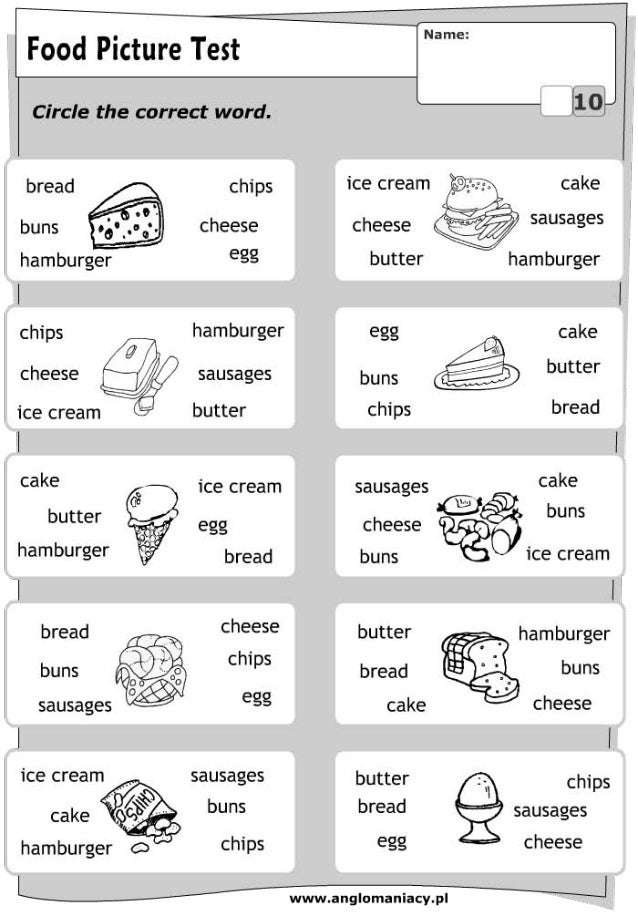 Once frozen, simply pop out the cubes and store in labeled freezer bags for up to 3 months. These are a perfect way to make it easy to send homemade baby food to daycare or to simply get ahead for the coming week.
Once frozen, simply pop out the cubes and store in labeled freezer bags for up to 3 months. These are a perfect way to make it easy to send homemade baby food to daycare or to simply get ahead for the coming week.
TIP: Find more information about storing baby food—including the best small food storage containers—here.
]
Tips for Making the Best Homemade Baby Food
- Use at least 1 cup base ingredient to ensure that a blender has enough volume to blend well.
- Thin any homemade puree with water, formula, or breast milk.
- Freeze any baby food you won’t use within 3 days in an ice cube tray. Transfer frozen cubes into freezer storage bags for up to 3 months. Thaw these frozen baby food recipes in an airtight container in the fridge overnight before you plan to serve.
- Taste all fresh foods for sweetness and to ensure that your puree isn’t too tart. To tame tartness, mix any puree with Banana Puree , Avocado Puree, Applesauce, or Mashed Sweet Potato.

- If you want to add fat or protein to any of these fruit or veggie purees, simply stir in a little whole milk yogurt, coconut cream, or Avocado Puree.
- Use breastmilk or formula in place of the water if desired.
- Mix two purees together for more complex flavors.
- Add texture to any puree by stirring in baby oatmeal or hemp seeds.
- For more details on each of these, find them here: Avocado Puree; Banana Puree, Bean Puree; Blueberry Puree, Kiwi Puree, Mango Puree, Pineapple Puree, Peanut Butter Puree, Peach Puree, Strawberry Puree
I’d love to hear your feedback on this way of making simple baby food, so please comment below. I so appreciate hearing your experience with my recipes!
Prep Time 5 minutes
Cook Time 0 minutes
Total Time 5 minutes
Author Amy Palanjian
Cuisine American
Course Baby Food
Calories 42kcal
Servings 4
- ▢ 1 cup blueberries, diced strawberries, diced peaches (peeled), diced kiwi (peeled), diced pineapple (peeled), diced banana (peeled), diced mango (peeled), diced avocado (peeled), OR beans (rinsed and drained)
- ▢ water, formula, or breast milk (as needed)
Choose one fruit, the avocado, or beans and add to a blender.

If making the puree with blueberries, strawberries, peaches, kiwi, pineapple, mango, or beans, add ¼ cup water and blend, adding more water as desired to make a thin, very smooth puree. If making avocado or banana, just blend (without water) until very smooth.
Serve or store in an airtight container for 3-5 days in the fridge, or up to 3 months in the freezer.
Vitamix Blender
Storage Containers
Silicone Ice Cube Tray
- Use at least 1 cup base ingredient to ensure that a blender has enough volume to blend well.
- Thin any homemade puree with water, formula, or breast milk.
- Freeze any baby food you won't use within 3 days in an ice cube tray. Transfer frozen cubes into freezer storage bags for up to 3 months. Thaw these frozen baby food recipes in an airtight container in the fridge overnight before you plan to serve.
- Taste all fresh foods for sweetness and to ensure that your puree isn't too tart.
 To tame tartness, mix any puree with Banana Puree , Avocado Puree, Applesauce, or Mashed Sweet Potato.
To tame tartness, mix any puree with Banana Puree , Avocado Puree, Applesauce, or Mashed Sweet Potato. - If you want to add fat or protein to any of these fruit or veggie purees, simply stir in a little whole milk yogurt, coconut cream, or Avocado Puree.
- Use breastmilk or formula in place of the water if desired.
- Mix two purees together for more complex flavors.
- Add texture to any puree by stirring in baby oatmeal or hemp seeds.
- For more details on each of these, find them here: Avocado Puree; Banana Puree, Bean Puree; Blueberry Puree, Kiwi Puree, Mango Puree, Pineapple Puree, Peanut Butter Puree, Peach Puree, Strawberry Puree
Serving: 0.25cup, Calories: 42kcal, Carbohydrates: 11g, Protein: 1g, Fat: 1g, Saturated Fat: 1g, Polyunsaturated Fat: 1g, Monounsaturated Fat: 1g, Sodium: 1mg, Potassium: 57mg, Fiber: 2g, Sugar: 7g, Vitamin A: 40IU, Vitamin C: 7mg, Calcium: 4mg, Iron: 1mg
Tried this recipe?Rate in the comments and tag @yummytoddlerfood on IG!
Ultimate Guide on Baby Food Purees (4-6+ months)
Home » Feeding Style » Baby Food Purees » Stage One » Ultimate Guide on Baby Food Purees
Here it is, the Ultimate Guide on How to Make Your Own Baby Food! Everything you need to know to get started on making homemade baby purees is right in this guide.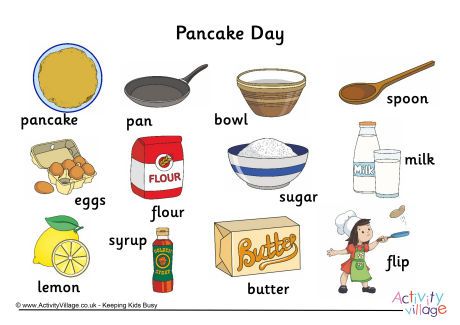 Tips, tools, storage methods, recipe combinations, starter purees, introducing new foods — name it, and you’ll find it here! This in-depth guide is perfect for babies ages 4-6+ months!
Tips, tools, storage methods, recipe combinations, starter purees, introducing new foods — name it, and you’ll find it here! This in-depth guide is perfect for babies ages 4-6+ months!
Medically reviewed and co-written by Jamie Johnson, Registered Dietitian Nutritionist (RDN), and Lauren Braaten, Pediatric Occupational Therapist (OT).
Purees for BabyAre you wanting to make your baby homemade baby food purees but don’t know where to start?
In this guide I’ll share everything you need to know to begin, starting from the best cooking tools to have on hand and safe storage. I will also share how to know when baby is ready for solids, how to introduce purees, the best first foods for baby, starter purees, and more! They’re all ideal for babies at least 4 months old (stage 1 baby food). You can also check out my best-selling cookbook for even more information and recipes!
In short, this comprehensive guide will teach you how to make and serve homemade baby food without stressing out about it.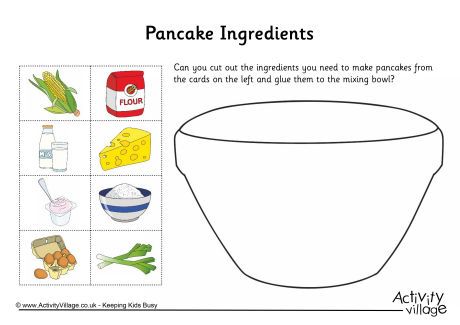
That’s the key here — don’t stress out. It’s supposed to be fun, and it’s going to be! Hopefully, after going through this guide, you’ll realize that making homemade baby food is as easy as pie. Plus, seeing your baby wanting to devour your appetizing homemade purees is a priceless moment that is worth the work.
Here’s a tip: Grab a cup of coffee (or glass of wine), and break this post down into smaller sections so you can digest it (pun intended) over time.
As you start making your own baby food purees, you’ll realize that this once daunting task can actually become second nature to you. Don’t panic, you’ve got this!
Guide on Baby Food Purees Video
Watch this video to find out more about how to freeze, store and thaw your own purees!
5 Reasons to Make Your Own Baby FoodNowadays, it’s easy to buy food for your baby. Many brands now tout that their baby food purees, pouches, and snack bars are organic. Given that you do have a choice, why should you cook at home?
TASTENothing tastes better than a healthy, homemade meal, and that goes for baby purees as well.
- Tastes Better – Food always tastes better using fresh, wholesome ingredients.
- Tastes Real – If you want your baby to experience what a real apple tastes like, then make a baby food puree using real apples. The industrial process of making store-bought baby food kills off most of the flavors, nutrients, and aromas of the produce, making purees taste bland and unnatural.
- Tastes Fresh – Most commercial baby food purees are heated to extremely high temperatures to have upwards of three-year shelf life. That means the food from the store is most likely older than your baby.
Don’t get me wrong — store-bought baby food is convenient if you are in a pinch. But you can’t beat the taste of any homemade baby food.
TEXTUREThe ability to control the thickness of your baby’s puree is an advantage that will not only help you get through the picky-eating days but also help transition your baby from purees to solid food.
- Some babies prefer thinner purees, while other babies like thicker ones. When you make your own, you are in control of how thin or thick your baby’s puree will be.
- Different textures are as new to your baby as the flavors themselves. So, varying a puree’s texture will not only give your baby a new eating experience but will also excite their taste buds.
Homemade baby food is undoubtedly healthier for your baby than any brand of store-bought food, whether jarred or in pouches. But the biggest nutrition win I feel you get is that you can tailor them to your child’s needs anytime.
- Is your baby feeling a little under the weather? Make a puree high in vitamin C.
- Low on iron? Add some beef, spinach, or beans.
- Maybe your baby is a little constipated. Making a puree with anything that starts with a “P” — pears, prunes, peas, peaches — will soon get your little one back on their adorable feet.

Since you’re the one who buys the ingredients and handles, preps, and cooks the purees, you can rest assured that you know exactly what’s going into all of your baby’s food.
What you make is what your babies get! There are no fillers, thickeners, suspicious ingredients with names you can’t pronounce, shelf stabilizers, or unnecessary water. Just healthy, flavorful homemade baby food that you can also enjoy!
COST SAVINGSLastly, this might come as a surprise, but making your own baby food with all organic ingredients is more than 50 percent cheaper than buying their store-bought counterpart!
Depending on how much your baby eats, homemade baby purees can save you some serious money.
What is Traditional WeaningTraditional weaning (also sometimes called “spoon-feeding”) involves introducing food to your baby via puree form first and then gradually progressing the texture and types of foods over time.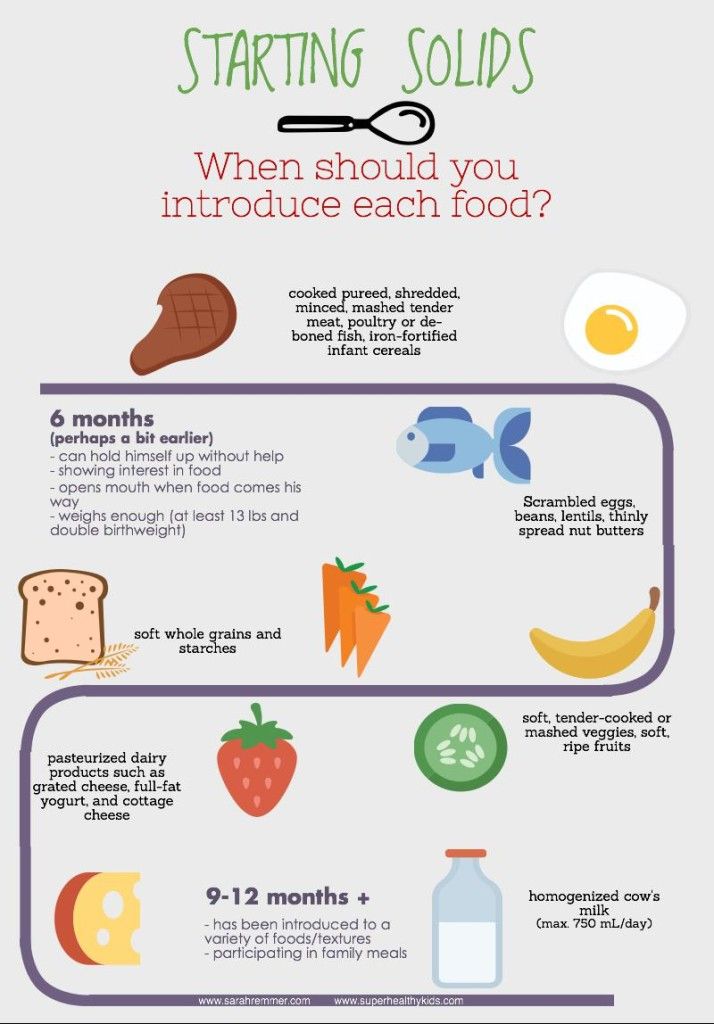 Since food is pureed with traditional weaning, the parent typically needs to spoon-feed their baby. Initial foods offered with this approach typically include thin, smooth purees, such as fruits, vegetables, oatmeal or rice cereal. Textures gradually progress to thicker purees, then mashed or chopped foods, and eventually soft finger foods, such as cooked vegetable pieces, toast, pasta, and meats.
Since food is pureed with traditional weaning, the parent typically needs to spoon-feed their baby. Initial foods offered with this approach typically include thin, smooth purees, such as fruits, vegetables, oatmeal or rice cereal. Textures gradually progress to thicker purees, then mashed or chopped foods, and eventually soft finger foods, such as cooked vegetable pieces, toast, pasta, and meats.
- Baby learns how to swallow safely first, then works on chewing skills later. Purees can be very helpful for teaching swallowing, as they help intrinsic tongue muscles develop, preparing your baby to chew and swallow more efficiently. It’s also less common to gag or choke on purees, which may help some babies feel more comfortable when starting the feeding process.
- You know how much your baby has eaten. Whether using store-bought or homemade purees, you’ll be able to get a good estimate on how much your baby consumed.

- Baby can get a lot of flavor from the start. Who says purees have to be boring and bland? Especially if you make homemade purees, there are some pretty tasty flavor combinations that you can offer baby as some of their first foods.
- Less Mess (well, maybe). Although letting baby touch and explore foods is an important part of the process, if you’re feeling hesitant on just how messy things are going to get initially, starting with spoon-feeding purees might help you ease into the process.
- Preparing lots of different purees can be time consuming. In addition to making other meals for yourself and the rest of the family, it might feel challenging to make separate meals just for your baby. Although with homemade purees, you will often make a big enough batch so that you’ll have several weeks’ worth of food.
- Spoon feeding baby can make it tough to feed yourself during a family style meal.
 Sitting and eating when baby eats is possible, but you will likely have many interruptions as you pause to spoon-feed baby throughout the meal.
Sitting and eating when baby eats is possible, but you will likely have many interruptions as you pause to spoon-feed baby throughout the meal. - Baby won’t get as much opportunity to engage in sensory exploration. Unless you progress to giving baby their own bowl or spreading purees on the tray and encouraging baby to taste the food off their fingers, they won’t get as much opportunity to feel the puree on their hands, fingers, and face.
- Feeding baby past signs of fullness. Reading baby’s cues is important no matter what approach you’re using, but there can be a tendency to continue to feed baby past signs of fullness when spoon-feeding and sneak in “just one more bite” from that almost empty container.
- Getting “stuck” in a comfortable zone. Once baby seems to have mastered taking purees from a spoon, it can get tempting to stick with what you know. But baby can get too comfortable with the smooth texture of purees if not encouraged to progress to other textures.
 This may lead to difficulties managing these textures later on in life.
This may lead to difficulties managing these textures later on in life.
Whether you decide to go with traditional weaning (purees), baby-led weaning or a combination of both, look for these readiness signs in your baby:
- Around 6 months of age
- Sitting with minimal assistance
- Good control of their head and trunk
- Bringing hands and toys to their mouth
- Appears interested in food, possibly by reaching for or leaning forward towards food
Before you start weaning your baby, you should consult with your pediatrician to make sure your child is developmentally ready.
Helpful Tools for Baby Food MakingFortunately, most of the tools you need to make homemade baby food can already be found in your kitchen. Score!
Tools Needed- blender or food processor
- baking sheet
- saucepans
- steamer insert with lid
- knives
- veggie peeler
- spatula
- freezer tray
- storage containers for fridge
- stasher bag
- reusable pouches
- baby food maker
- highchair
- suction bowl or baby bowl
- baby spoon
- open lid cup
- bib with catch pocket
- sleeved bib
- splat mat to cover the floor
Learning Resources: looking for the best high chair, cups or spoons for your baby? Then we’ve got you covered! Here you will find How to Find the Best High Chair for Baby, an easy guide on Best First Open Cups for Baby (plus 4 tips when introducing a cup) as well as 3 Tips on How To Spoon Feed Baby (plus – our favorite spoons for purees or BLW).
All of the baby food recipes on this site and in my cookbooks are designed to enhance the natural taste of the fruits and veggies while keeping as many nutrients intact as possible. In other words, the goal is to make a puree that’s both healthy and delectable.
There are several ways you can cook baby food purees, but the main techniques I use are:
- Steaming
- Roasting
- Simmering
- Raw
Keep in mind, that as long as the produce is cooked until soft, that there isn’t a right or wrong way to cook it for baby food.
If a recipe for broccoli calls for steaming but you want to roast it because you will already be roasting some broccoli for yourself for dinner, then go ahead and roast the broccoli for your baby’s puree. Play around and have some fun with it!
Adding Spices to Baby PureesIt’s encouraged that you can serve your baby a homemade puree with a pinch of spices or herbs from the very first bite.
Benefits of Spices
- boost and compliment any fruit or vegetable puree
- broaden baby’s emerging palate
- add more flavor and depth into their foods
- decrease picky eating in the years to come
- have medicinal properties in them — they can help with digestive issues, boost brain functions, repair muscle tissues, and so on.
While each puree recipe on this site has a selection of spices or herbs that complement the flavors of the fruit or vegetable in the puree, it’s up to you if you want to add them. You do you! Either way, the puree recipes on this site will be delicious.
Top Spices to Add to Baby’s Puree
- Cinnamon
- Cloves
- Nutmeg
- Basil
- Mint
- Parsley
- Mild Curry Powder
- Fresh Lemon Juice
- Garlic
- Rosemary
Pureeing homemade baby food is a very straightforward event. However, it can take some practice to get the smoothest, creamiest puree for your baby.
Step-by-Step Instructions
- Place Produce In Blender: place cooked produce into a blender or food processor.
- Start Machine: turn the machine starting on low and increasing until you reach the highest setting.
- Add Liquids: add liquids (water, fresh breast milk or formula) in small increments if needed to help smooth out the puree. Root veggies may been up to a cup of liquid while fruits may not need any. Add in 1/4 cup of liquids at a time to make sure not to add too much liquids.
- Blend: it usually takes 1-2 mintues to fully blend a puree for baby. If you are getting a chunky puree, add in a little bit more water and keep blending.
Note on Blending: you will always get a smoother puree when you use a blender over a food processor. Most babies will not notice a difference between the texture of baby food made in a blender versus a food processor but if your baby is having trouble with the texture of a puree made in a food processor, you may want to try using a blender.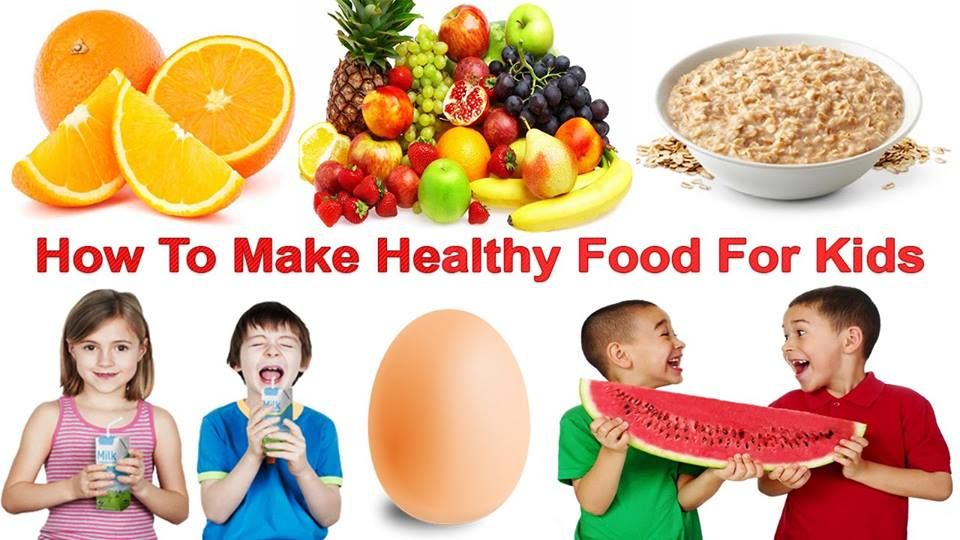
- Give It Time: Give your blender or food processor some time to work its magic. It takes 1-2 minutes of blending for each puree to get the smoothest puree. But it may take longer if you have an older blender model or you are using a food processor.
- Add Liquids: You may have to add extra liquids like water, fresh breast milk, or formula into the blender or food processor in order to get the blender really going. Hard root vegetables like carrots, sweet potatoes, beets, etc., often take at least 1-2 cups of liquids because they do not have high water content. I recommend adding liquid into the blender in 1/4 cup increments or smaller so you don’t get a runny puree.
- Cyclone Effect: You will know you have the right amount of liquid and are at the right speed when you get the cyclone effect. This is when all the ingredients are completely circling the blending without any interference.

- Scrape Down Sides: While blending, make sure to scrape the sides with a spatula to get all the produce and spices incorporated into the puree.
- Blender vs. Food Processor: A high-speed blender will give you the smoothest puree. A food processor will also work but the result is a slightly thicker puree. The upside of the food processor is that you don’t have to add as much liquid to the puree.
Just Starting: Roasted sweet potato and 1/2 cup of water.
30 Seconds: Scraped down the sides and added 1/4 cup more of water.
60 Seconds: Scraped down the sides and added 1/4 cup more of water.
90 Seconds: Added 2 tablespoons of water, and it was perfect. The puree was clearly running through the blender and the puree was getting super smooth.
Finished: A smooth puree for the win!
See the video in this post to get a step-by-step look at how to blend baby food.
Your freezer is about to become your new best friend, allowing you to keep several weeks’ worth of baby purees at the ready.
How to Freeze Baby FoodWhenever you make a puree, put several ounces in the fridge for your little one to enjoy that week, then freeze the rest of the batch for your baby to eat at a later date. Please make sure you get it in the puree into the fridge or freezer within 1 hour of cooking to prevent bacteria growth.
- Make a puree.
- Let it cool slightly.
- Transfer the puree to freezer trays or freezer jars.
- Cover the freezer trays with a lid or plastic wrap.
- Label with date and name of puree.
- Place the tray in the freezer.
- Let it freeze for at least 5 hours.
- Take the tray out of the freezer.
- Crack the purees out of the trays.
- Place the frozen purees into zip-lock baggies or stasher bags.

How to Store
Baby FoodPurees can be stored for up to four days in an airtight container in the fridge or 4 months in the freezer.
How to Thaw Baby FoodThawing may seem like a no-brainer, but it never hurts to know your options. There are three different ways to thaw purees.
Microwave- Take the frozen puree cubes that you want to serve out of your freezer.
- Place them in a glass microwave-safe container.
- Microwave in 20-second increments, stirring every time.
- The puree is ready when it is just warm to your touch.
- Grab two clean spoons, one for you and one for your baby, and test your puree before serving.
Heating Tip: To prevent the microwave from unevenly heating the puree, which can leave it with cold and really hot spots and can burn your baby’s mouth, make sure you stir between each interval and taste test it before serving to your baby.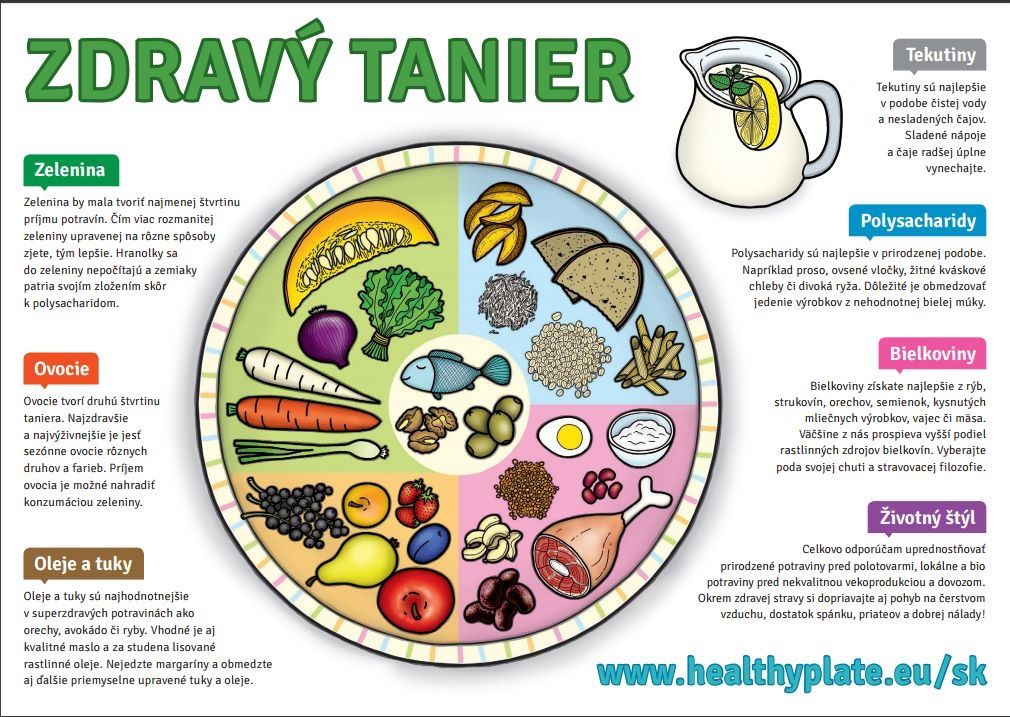
This one takes the longest time, but it is an excellent alternative to using a microwave.
- Take the frozen puree cubes you want to serve out of your freezer.
- Place the cubes in an air-tight glass container.
- Place the container in the fridge and let the cubes thaw for 8 to 12 hours, usually overnight.
- Do not leave the puree in the container to thaw on the counter or anywhere out of the fridge, as bacteria will start to grow at a rapid rate — which is definitely not recommended.
- Note that the puree will be cold but thawed. So if your baby likes their puree warmed, you’ll have to finish the job using the microwave or stovetop method.
- In a small saucepan, add the frozen puree cubes you want to serve to your baby.
- Over medium-low heat, gently cook the puree until warm, stirring occasionally.
Thawing Tip: Some infants like their puree cold, warm, or really warm, and some will eat it no matter the temperature.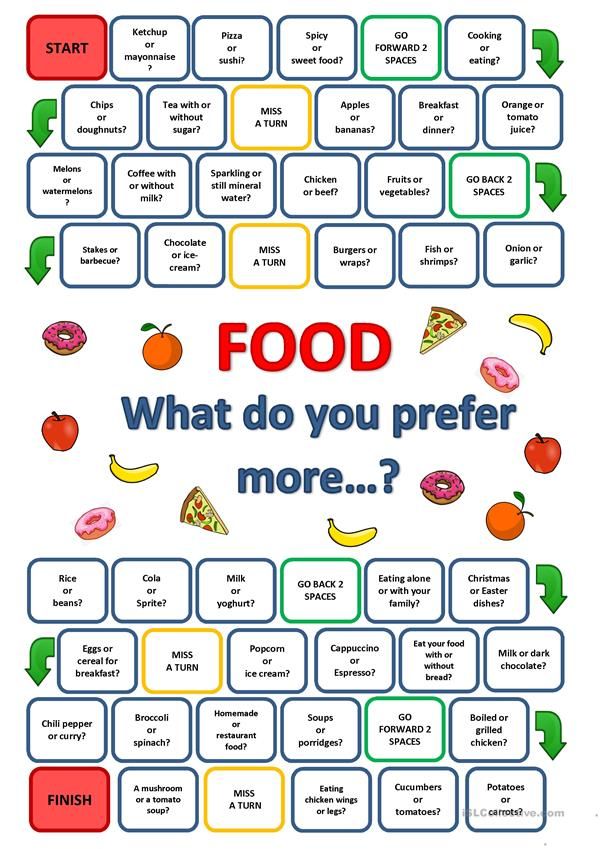 You will get to know your baby’s personal preferences as the two of you bond over food.
You will get to know your baby’s personal preferences as the two of you bond over food.
WeeSprout Glass Baby Food Storage Jars
These 4oz containers with lids allow you to prepare the perfect amount of food for your little ones. No more food waste! Made with food-grade glass and a plastic lid. Microwave, freezer, and dishwasher-friendly!
View Product
How to Introduce PureesHigh chair? Check. Bib? Check. Fully charged cell phone? Check.
With this holy trinity of baby-feeding accouterment, you’re ready for that first feed.
The faces, oh, the faces your baby is about to make! Out of all the firsts, feeding is the most fun — and the messiest. So grab a few wipes, double-check that your phone has enough storage for dozens of photos and videos, and let’s get started!
Before you begin, make sure your baby has a little bit of breast milk or formula in their belly, about half of what you’d normally give in a regular feeding.
Not too full. Not too hungry. Just right.
Not too hungry. Just right.
This is not going to be a clean and simple process. Your baby may eat food one day, refuse it the next, and paint their face with it the next. It’s all okay. Playing with food is a good thing; it is simply a way for babies to explore, learn, smell, and taste the world around them. So have those wipes close by, and remember:
- Start Slowly – Two teaspoons once a day is enough food for babies for the first couple of meals. Their bodies need time to adjust and digest new food. If they are still acting hungry, give them some more breast milk or formula.
- Let the Baby Decide – Your little one should determine how fast or slow they want to eat.
- All Spoons on Deck – Have more than one spoon ready. Your baby will surely snatch one out of your hands to play with, which is a-okay.
- Have Fun – Smile at your baby throughout the experience, and try to relax.
 The more fun you have, the greater the likelihood your baby will enjoy it, too (even if they barely eat or don’t eat at all).
The more fun you have, the greater the likelihood your baby will enjoy it, too (even if they barely eat or don’t eat at all). - Build Up – After a couple of days, build up the quantity of food you offer one tablespoon at a time.
Are you ready to start the feeding? Select a puree you’ve already made. Place just one or two teaspoons of it into its own bowl and slightly warm this small amount. You can choose whether to gently spoon it into your baby’s mouth or hand the spoon over to them to attempt self-feeding. If your baby tries to grab the spoon from you and gets it into their mouth by themselves, whoa — you’ve got success on your hands. If the experience is a bit milder, and they let you spoon some puree into their mouth, enjoy it. This is a winning experience, too.
The LikelySome babies will simply not open their mouths. Some babies will take one bite, clamp their mouths, and turn away. If (and when) any of this happens, don’t force the spoon into their mouth, and don’t stress out. Here are a couple of things to try:
If (and when) any of this happens, don’t force the spoon into their mouth, and don’t stress out. Here are a couple of things to try:
- Put a bit of the puree at the end of your finger and see if your baby will suck it off. This is an unintimidating way to begin, especially as spoons can be scary for little ones.
- Pour a tablespoon of puree onto the high chair tray, and allow your baby to play with it if they want. This is a less micromanaging approach to letting the baby explore new food. As babies love to put everything in their mouths, odds are at least some will get in (or near) it.
- If your baby has no interest in these options, end the feeding. Dispose of the one or two teaspoons you warmed. Put the remaining, unheated puree in the refrigerator to try again tomorrow.
Remember that before their first birthday, babies receive their main source of calories, vitamins, fat, and protein from your breast milk or formula. At this point, any puree or solid food you give your baby is mainly used to teach them how to eat and explore real food.
Not sure which foods to offer first? These 10 foods are nutrient-dense, easy to make, and tasty purees are a choice for your baby.
- Avocado
- Banana
- Sweet Potatoes
- Apple
- Broccoli
- Pear
- Carrot
- Yogurt
- Oats
- Green Bean
You will want to avoid these foods until your baby is developmentally ready for them:
- Whole nuts, seeds
- Clumps of nut butter
- Dried fruit
- Hard candy
- Hard, raw fruits and veggies
- Popcorn
- Hot dogs
- Whole grapes
- Added salt and sugar
- Honey until 1 year of age
- Cow’s milk until 1 year of age
Aim to feed baby a variety of flavors to help expand her palette, which can help reduce picky eating. Try to make sure you serve at least one iron-rich food per meal to help prevent iron deficiency anemia. To begin, serve thin pureed foods that
To begin, serve thin pureed foods that
Most babies are ready to start purees around six months of age. Start with 1-2 meals a day and keep the same amount of formula or breast milk feedings, usually five. Note that there is no one right schedule for your baby.
7am- 7:30-wake-up, bottle/breastfeed
7:30am- 8:30am- play
8:30am- 9am- avocado puree
9am- 10:30am- morning nap
10:30am- 11am- bottle/breastfeed
11am- 12pm-play
12pm-2pm- afternoon nap
2pm- 2:30pm-bottle/breastfeed
2:30- 3pm- banana puree
3- 3pm -play
4pm- 5pm- cat nap
5pm- 5:30pm- bottle/breastfeed
5:30pm- 6:30 pm- play
6:30pm- bath
7pm-7:30pm- bottle/breastfeed
7:30pm- bedtime
If your baby is not eating 2 solid meals a day yet, go ahead and increase purees to twice a day. Once you have introduced a variety of single-ingredient purees, you can start offering combination purees.
7am- 7:30am- wake-up, bottle/breastfeed
7:30-8:30am- play
8:30am– 9am- apple and carrot puree
9am-10:30am- morning nap
10:30am- 11am- bottle/breastfeed
11am-12pm-play
12pm- 2pm- afternoon nap
2pm- 2:30pm- bottle/breastfeed
2:30- 4pm- play
4pm- 5pm- cat nap
5:00pm- 5:30pm- bottle/breastfeed
5:30pm- 6:00 pm- play
6:00pm- 6:30pm- sweet potato and chicken puree, yogurt on the side
6:30pm- bath
7pm- 7:30pm- bottle/breastfeed
7:30 pm-bedtime
By now, your baby should be getting 3 meals a day, in addition to formula or breast milk, which is usually reduced to 4 feedings per day. Around 9-10, your baby should be introduced to chunky purees and then quickly to finger foods.
7am-7:30am- wake up, bottle/breastfeed
7:30am-8:30am- play
8:30am- 9am- breakfast of a quartered hard-boiled egg, halved raspberries, whole grain pancakes
9am-10am- play
10am-12pm- morning nap
12pm- 12:30pm-bottle/breastfeed
12:30pm-1pm- play
1pm- 1:30pm- lunch of cut up baked chicken, steamed broccoli and rice
1:30pm-2:45 pm- play
2:45pm- 3pm- snack of whole grain O’s, cut up cheese stick and sliced strawberries
3pm- 4:30pm- afternoon nap
4:30pm- 5pm- bottle/breastfeed
5pm-6pm- play
6pm- 6:30pm- dinner of ground hamburger meat, baked sweet potato sticks, steamed peas and carrots
6:30pm- bath
7pm-7:30pm- bottle/breastfeed
7:30 pm-bedtime
Babies are less likely to gag or choke on purees compared to solid foods. When babies first suck on the breast or bottle, they are learning how to swallow liquids. Transitioning to purees can help teach your baby an effective swallowing technique, by propelling foods backward with the tongue and swallowing.
When babies first suck on the breast or bottle, they are learning how to swallow liquids. Transitioning to purees can help teach your baby an effective swallowing technique, by propelling foods backward with the tongue and swallowing.
Although it may still look and feel intense or scary the first time a parent witnesses it, gagging is different than choking.
GaggingWhen a baby gags, it is most likely because food that has not been chewed well has gotten too far back in the mouth. The gag reflex is a built-in protective mechanism to protect the airway from food. With practice, your baby learns that they need to chew first, then swallow the food. Fortunately, with continued practice with eating, the gag reflex should lessen over time.
Signs of gagging include:- sounds, such as coughing or hacking
- baby’s skin may turn red or a darker shade
- baby’s eyes might water
Babies usually recover fairly quickly, and you may see the food come forward in their mouth.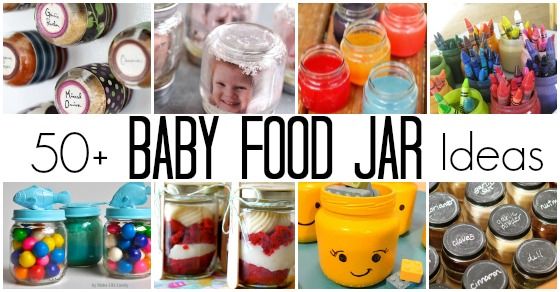 Although not as common, vomiting after gagging may happen. During this time, watch closely and do your best to stay calm.
Although not as common, vomiting after gagging may happen. During this time, watch closely and do your best to stay calm.
On the other hand, choking happens when there is a blockage of the upper airway, from food or an object. Complete blockage of the airway prevents a person from breathing effectively. Therefore, choking is a true medical emergency and requires quick intervention on your part.
Signs of choking include:- baby is quiet
- baby’s skin may turn blueish in color
- baby won’t be able to cry or make much sound
Your baby may become unresponsive or lose consciousness if the food is not cleared. This is why it’s recommended to know CPR before starting solids of any kind.
How to Keep Baby SafeAs a parent of two, I know how scary it can be to introduce solid foods to your baby. With the proper precautions and knowledge, the fears will loosen and feeding your baby can become a wonderful adventure for both of you. To be prepared, we recommend you attend a live class in your area or take this online Baby CPR Course.
To be prepared, we recommend you attend a live class in your area or take this online Baby CPR Course.
- Always supervise with food – sit with your baby and try not to multi-task while your baby is eating.
- Baby should be sitting in an upright position for all meals and snacks, not reclined. If your baby starts to get sleepy during eating, remove food.
- No eating in the car seat unless an adult is in the backseat supervising your baby.
- Do not let baby eat on the go. Once your baby is crawling or walking, avoid letting them move around with food in their mouth or holding food in their hands.
- Check the temperature of foods before offering them.
- Check baby’s mouth after they are done eating. Some babies may pocket food in the sides of their cheeks or get food stuck to the roof of their mouth as they are learning to eat. If you see any food remaining, encourage your baby to keep chewing, spit it out if they need to, or take sips of water or milk.
 Avoid sticking your finger in your baby’s mouth to get the food out – we want baby to learn how to manage taking care of the food.
Avoid sticking your finger in your baby’s mouth to get the food out – we want baby to learn how to manage taking care of the food.
Safety 101: CPR and Choking (0-12 years)
On online course for today’s modern parent! This course goes over all the information you need to help your child if they are choking.
- Expert-taught course from a Certified CPR Instructor
- 30+ minutes of on-demand content
- 10+ downloadable guides and checklists
- 2-years of access to course material – refer back when you need it most
Enroll Today
How to Teach Babies to ChewWhen babies first start chewing, the movement you see is a basic up and down jaw movement, sometimes called munching, that will eventually progress into a mature chewing pattern, called rotary chewing. Throughout this process, babies are also developing side-to-side tongue movements, called tongue lateralization. Tongue lateralization helps your baby push food over to their gums, where the molars will eventually come in, and where the heavy work of chewing happens. As your baby chews the food multiple times, it forms into a little ball or “bolus” of food, which is then transferred to the back of the mouth for swallowing.
As your baby chews the food multiple times, it forms into a little ball or “bolus” of food, which is then transferred to the back of the mouth for swallowing.
Purees can also be used to develop the skills needed for chewing. You can place a spoonful of puree to the sides of the mouth as you would with a teether or soft piece of food. The purpose of this is not to expect your baby to start “chewing” the puree in the way that we think of chewing as adults, but rather to encourage your baby to start working tongue lateralization.
Frequently Asked Questions
How many ounces will baby actually eat?
This varies with each baby so it just depends! Some babies will only have a taste and be done, and others will want more and more. Some babies have a larger appetite than others so it’s hard to know but start with one teaspoon and work your way up to a tablespoon, and then more if your baby is still interested.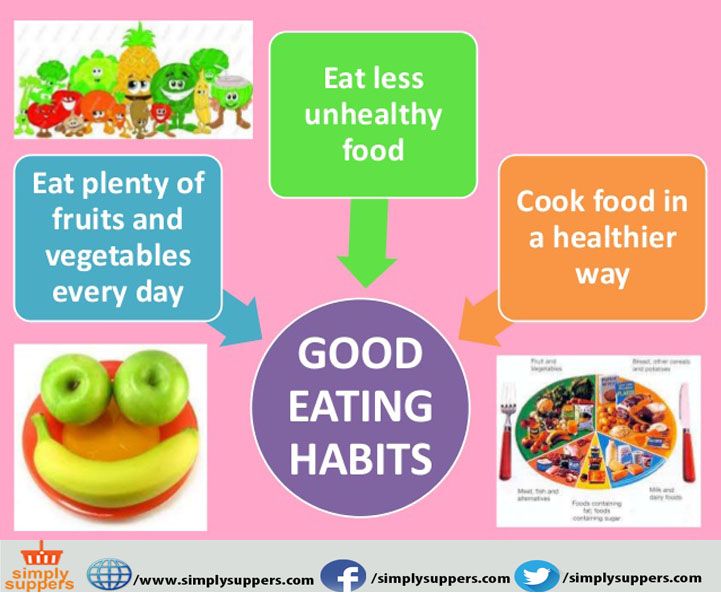 Baby will eat more as they get older but always pay attention to your baby’s hunger and fullness cues to know when to stop feeding.
Baby will eat more as they get older but always pay attention to your baby’s hunger and fullness cues to know when to stop feeding.
How many ounces of purees should baby eat?
By the time baby is ready for finger foods, she should be eating around 4 ounces of food at each meal. If it is more or less than this, do not worry. Babies get most of their nutrition from formula or breast milk until they turn 1 year old.
Does baby need teeth to eat?
The question of how babies can chew foods without teeth makes any parent scratch their heads! But in reality, we all chew food with our back molars, not our front teeth, which baby doesn’t get until 18-22 months of age. Good thing babies have super tough and strong gums, which they use to mash, gnaw and chew foods. Baby’s gums are better at chewing food than you would think, and your baby will be able to chew more foods the older they get, even without their molars.
Baby’s gums are better at chewing food than you would think, and your baby will be able to chew more foods the older they get, even without their molars.
Can you mix baby-bed weaning and purees?
Absolutely! Both purees and solid foods are great ways to introduce your baby to new flavors and textures. Babies actually learn to swallow liquids first, whether in the form of breastmilk or bottles. Purees are similar to offering liquid that’s been thickened a bit, so this can help with introducing your baby to a texture change and getting practice with swallowing solid food. Just consider limiting the amount of times you switch back and forth between soft solids and purees during each meal, at least when your baby is first learning to eat. Instead, you could offer a veggie puree as the “appetizer” before soft solids at one meal, or yogurt as the “dessert” at another meal.
Puree Feeding
Tips- Relax: try to relax and don’t worry too much about how much baby eats. It should be fun for you and baby.
- Timing: babies tend to tolerate purees best 1 hour breastfeeding or bottle, when they aren’t too hungry or too full.
- Limit distractions: turn off screens, put away toys, and sit down face to face with baby during the meal.
- Follow baby’s lead: it can be easy to overfeed when using traditional weaning vs baby led weaning, so always follow baby’s cues for when they are done eating. Turning away from the spoon, closing his mouth, or pushing food away are all signs that baby is finished with the meal.
- Start with a small amount: and small servings. 1-2 oz of food per meal is adequate. Remember, these servings will be smaller than you think and at this stage, breast milk or formula will still be your baby’s primary source of calories and nutrition.

- Offer the spoon and allow waiting time: after you bring the spoon toward baby’s mouth, wait for her to open and accept it. Allow baby to close her top lip and suck puree off the spoon, while you guide the spoon straight out of the mouth. Avoid scraping the spoon on the roof of the mouth as you bring it back.
- Use shallow spoons or flat spoons: these help baby with clearing puree off with the top lip. A couple options we love include Olababy and ezpz mini spoon.
- Give time to practice: at first you might notice baby pushing the food back out and then swallowing. With time and practice, this forward/backward reflexive motion with the tongue will fade and baby will start swallowing more food than he pushes back out.
- Have a back spoon (or two!): even very young babies may want to be involved in the process as much as possible. Giving baby an extra spoon to hold can be helpful in giving baby sense of control and promoting hand-eye coordination.

- Let baby get messy! Encourage touching and playing with purees for a full sensory experience.
Or watch a shortened version of this video here.
Make Baby Food
Make baby food puree per the recipe. This could be by steaming, roasting or sauteing.
Freeze Purees
Pour puree into freezer tray or small baby food jars.
Lable the freezer tray or baby food jars with the recipe name and date.
Place the tray or jars in the freezer and freeze for at least 5 hours.
Pop the frozen baby food cubes out and place them into a zip-lock baggie or stasher bag.
Thaw Baby Food
Microwave –
Take the frozen puree cubes that you want to serve out of your freezer.
 Place them in a glass microwave-safe container. Microwave in 20-second increments, stirring every time The puree is ready when it is just warm to your touch. Grab two clean spoons, one for you and one for your baby, and test your puree before serving.
Place them in a glass microwave-safe container. Microwave in 20-second increments, stirring every time The puree is ready when it is just warm to your touch. Grab two clean spoons, one for you and one for your baby, and test your puree before serving.Fridge –
Take the frozen puree cubes you want to serve out of your freezer. Place the cubes in an air-tight glass container. Place the container in the fridge and let thaw for 12 to 16 hours. Do not leave the puree in the container to thaw on the counter or anywhere out of the fridge, as bacteria will start to grow at a rapid rate – which is definitely not good. The puree will be cold but thawed, so if your baby likes her puree warmed, you’ll have to finish the job using the microwave or stovetop method.
Stovetop –
In a small saucepan, add the frozen puree cubes you want to serve to baby.
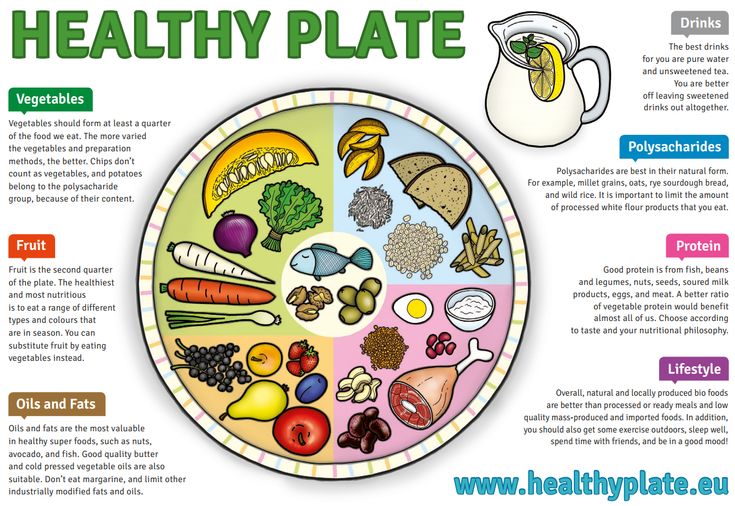 Over medium-low heat, gently cook the puree until warm, stirring occasionally.
Over medium-low heat, gently cook the puree until warm, stirring occasionally.Serve and enjoy!
Blender
Bumkins Baby Bowl
Freezer Tray
Tripp Trapp High Chair
Did you make this recipe?
Tag @babyfoode on Instagram and hashtag it #babyfoode!
Pin Recipe Email a Friend
How to cook baby food - Encyclopedia Baby food
Viktoriya Levchuk© Broccoli, zucchini and cauliflower puree Taking care of your child's health in today's world means starting complementary foods right with whole, healthy foods prepared with love. Most mothers will immediately ask how to prepare baby food that is of high quality, easily digestible and tasty.
Canned food can sometimes seem easy to feed a baby, but when you start reading the ingredients of each tiny can (not to mention the cost of each can), it makes more sense to try your hand at making homemade baby food yourself.
When you think about how to prepare baby food, it seems so complicated. However, everything is much easier. In fact, baby food is the easiest recipe to prepare. Many mothers who hate to cook learn how to cook with healthy complementary foods for their beloved child.
Let's start with a few practical tips on what you need, what products to choose and what else to keep in mind to make the process as easy as possible.
Contents:
So, how to prepare baby food? Simple - choose a fruit or vegetable that needs to be introduced into complementary foods, cook until tender, make a smooth puree and voila ... a batch of baby food is ready. And now to the details, the following tips will teach you how to cook baby food in no time.
1.
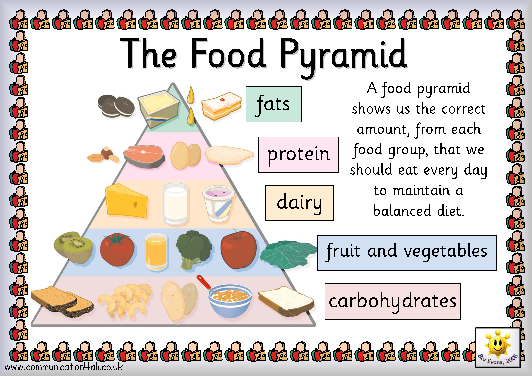 Buying the right tools
Buying the right tools -
Blender
This “devil machine” is the best assistant in the kitchen. Only a blender can bring fruits, vegetables, grains, meat and other products to the ideal consistency. During the first few months, solid foods are made smooth and tender without lumps so that the baby's digestion slowly gets used to the complex textures.
-
Stainless saucepan
Good, regular dishes will always be washed. The first experiments burn, stick and are almost not washed off. Buy one good quality baby food pot. I have never regretted in 6 years. She washes with a brush, dishwasher, iron brush and she is still like new. We choose high-quality, stainless dishes, small up to 1 liter, with a good handle and lid. I have a lid with heat protection, I can take it with my bare hands, it is not hot, and neither is the pen.
Broth with peas and rice-
Baby food freezer tray with lid
One good plastic or flexible silicone tray will last a long time.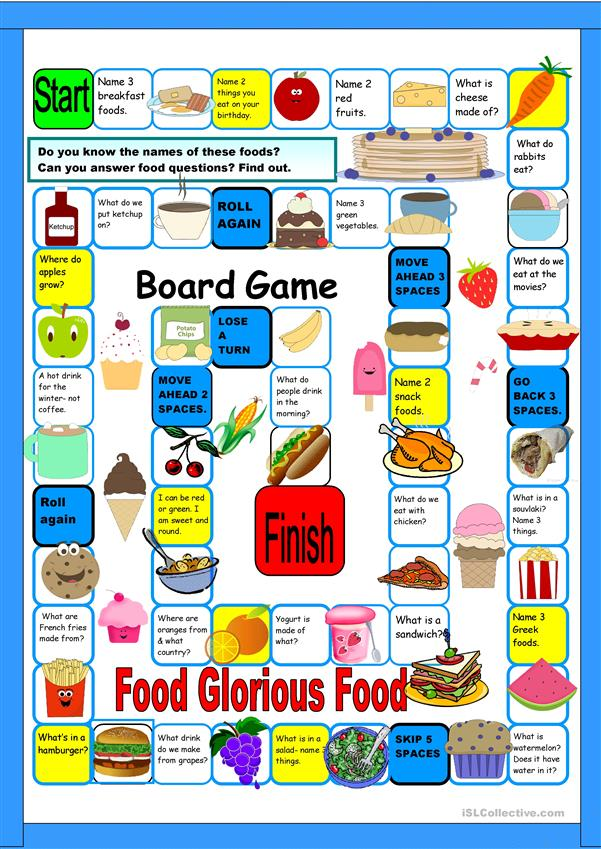 Moreover, it is needed for the first 4-6 months; you will not need to freeze baby purees anymore. You can buy without a lid, but then you have to suffer from bags, as baby purees love to absorb odors from the freezer. During meals, portions can be diced and heated in the microwave before serving.
Moreover, it is needed for the first 4-6 months; you will not need to freeze baby purees anymore. You can buy without a lid, but then you have to suffer from bags, as baby purees love to absorb odors from the freezer. During meals, portions can be diced and heated in the microwave before serving.
-
Food thermometer
Many new mothers are advised to buy a food thermometer. I didn't buy. My wrist was an indicator, always, if I'm hot, then the child will be very hot. But for speed and convenience, a food thermometer comes in handy to make sure the food is at the right temperature for small mouths.
-
Steamer or multicooker
A modern kitchen cannot do without these devices, because it is easier and more useful for us. In principle, a slow cooker will always help out when you need to cook porridge, and a double boiler - a lot of vegetables and fruits. These tools always help out, save the time of an eternally busy mother. I advise!!!
These tools always help out, save the time of an eternally busy mother. I advise!!!
2. Choose Your First Foods Carefully
Choose fruits and vegetables for your first weaning foods that are rich in nutrients. Brightly colored vegetables are fresh vegetables. For the first feeding, foods such as broccoli, zucchini, zucchini, pumpkin are suitable, they are rich in vitamins, and at the same time look attractive. Fruits such as apple and pear can be introduced from about six months of age and are also very rich in vitamins, such as blueberries and peaches.
It's a good idea to talk to your doctor about which foods to introduce first and what is the best age to start complementary foods (this can be between four and six months) and don't forget to start with one.
We offer the child the same food for four days - if any signs of allergy appear, the mother will immediately notice it.
3. Safety first
Making homemade baby food is a convenient way to provide your baby with a healthy diet free of additives and preservatives.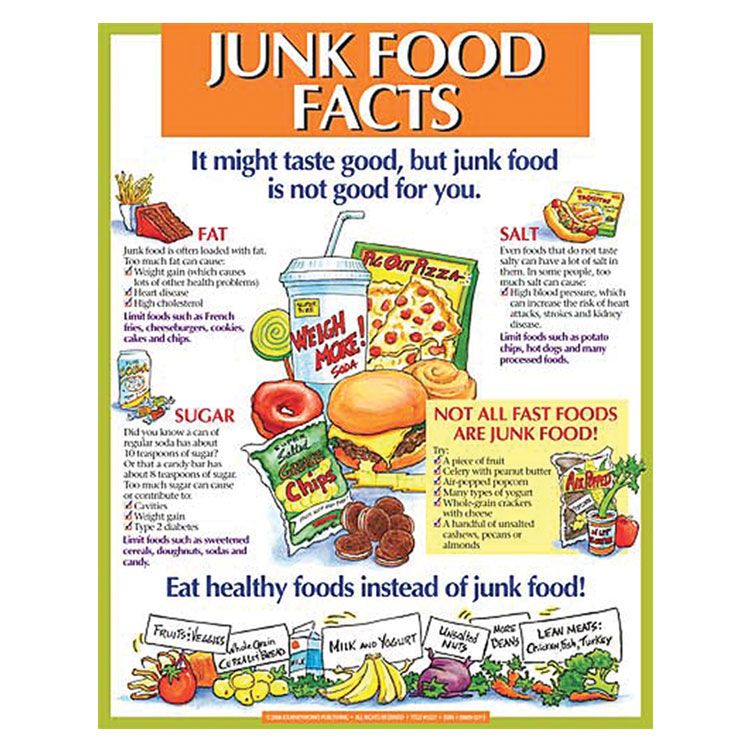
Preparing and freezing small batches of food in advance makes the task much easier. However, do not forget to throw away any food that has been touched with a used feeding spoon, food that has already been reheated, and food that has been in the freezer for too long. At first, it is recommended to keep frozen baby puree for no more than 1 month in the freezer.
Children's dishes can be washed in the dishwasher, the only thing you have to do is choose a cleaning agent for children. If there is no dishwasher, then wash the dishes under hot water, at first you can pour boiling water over before use.
Food should always be warm, but not hot. If there is no thermometer, we measure the temperature of the food with the back of the wrist before serving.
Avoid food or utensils that contain harsh chemicals that can react in microwaves or ovens and always keep your hands clean before handling any food.
I remind you that your child should wash their hands before preparing food. They should be washed frequently, as well as products that are cleaned and then cut.
They should be washed frequently, as well as products that are cleaned and then cut.
What happens when products are rejected?
It is important to understand that a child likes and dislikes certain foods, but it is important to consider that as the baby develops, his tiny taste buds also grow and new taste preferences appear. Parents need to be patient, the first feeding is a messy experience, so you need to have enough rags and bibs on hand to enjoy the baby's first taste sensations.
Baby food at home: recipes, videos
The growing up of a little person is a delightful process that cannot but please the parents of the crumbs. However, the first feeling that mom and dad face when it comes time to introduce complementary foods into a child's diet is confusion.
Which food is the most healthy, hypoallergenic and delicious? Most often, the first "real" meal of the crumbs after mother's milk and formula is vegetable or fruit puree. The choice of baby food on store shelves is very wide - each manufacturer tries to convince the buyer that jars with beautiful labels contain only natural products, there are no dyes, sweeteners and other harmful additives. A variety of "meals" for babies in factory packaging marked "3+ months." does not guarantee the true usefulness of the product that is inside. Every mother understands that complementary foods prepared on her own, from natural products, are much better for her child.
A variety of "meals" for babies in factory packaging marked "3+ months." does not guarantee the true usefulness of the product that is inside. Every mother understands that complementary foods prepared on her own, from natural products, are much better for her child.
Another advantage of making your own baby food is that you can choose the best ingredients, wash fruits, berries or vegetables thoroughly, peel them well and remove damaged parts. In addition, the parents of the crumbs themselves can choose the way - how best to cook baby food: food can not only be boiled, but also baked in the oven or cooked in a double boiler.
It is also important that home-made baby puree is much tastier, it will undoubtedly be useful for a growing organism and will not cause allergies! Even the simplest children's dish, prepared by mom, keeps the warmth of caring hands and cannot be compared with expensive dishes from the store.
What should be the correct complementary foods for children? Of course, you should start with one ingredient (such purees are called one-component purees), then move on to more complex options. Experts emphasize that the most suitable product for the first "dish" is zucchini. Cauliflower can also be considered neutral. Gradually it will be possible to introduce carrots, pumpkins, potatoes, broccoli and green peas. At the first stage of the introduction of complementary foods, it is better to give preference to vegetable purees and switch to fruit purees when the child already treats “serious” food well.
Experts emphasize that the most suitable product for the first "dish" is zucchini. Cauliflower can also be considered neutral. Gradually it will be possible to introduce carrots, pumpkins, potatoes, broccoli and green peas. At the first stage of the introduction of complementary foods, it is better to give preference to vegetable purees and switch to fruit purees when the child already treats “serious” food well.
The basic rules and principles of preparing high-quality baby food yourself:
- it is best to take fresh products for preparations: fruits from the tree, berries from the bush and vegetables from the garden are much healthier than those that have already been in the refrigerator for a week. If there are no seasonal vegetables at the time of preparation, the use of frozen foods is acceptable, but in this case, try to give preference to whole fruits - they retain the greatest amount of nutrients;
- only filtered water should be used for cooking vegetables;
- the preparation of baby food requires, if not separate dishes, then thoroughly washed.
 Do not, for example, cut vegetables on a meat board. If there is a dog or cat in the house, then you need to restrict her access to the kitchen when food is being prepared;
Do not, for example, cut vegetables on a meat board. If there is a dog or cat in the house, then you need to restrict her access to the kitchen when food is being prepared; - It is not recommended to use vegetables and fruits in the diet of infants, in which the content of chemical additives is consistently high. These often include watermelons and melons, beets, spinach and lettuce;
- It is better to soak vegetables purchased on the market with water before cooking: put carrots, potatoes, zucchini and cauliflower in filtered water for a couple of hours - this will remove nitrates;
- do not leave excess mashed potatoes for the next meal: the child should be given only freshly prepared food, and "yesterday's" mashed potatoes are best eaten by adults or given to pets;
- you can choose cream, boiled egg yolk, grated cheese or finely chopped dill as an additive to puree - this will diversify dishes for children from 8 months;
- try it! Children's food can and should be enjoyed by an adult.
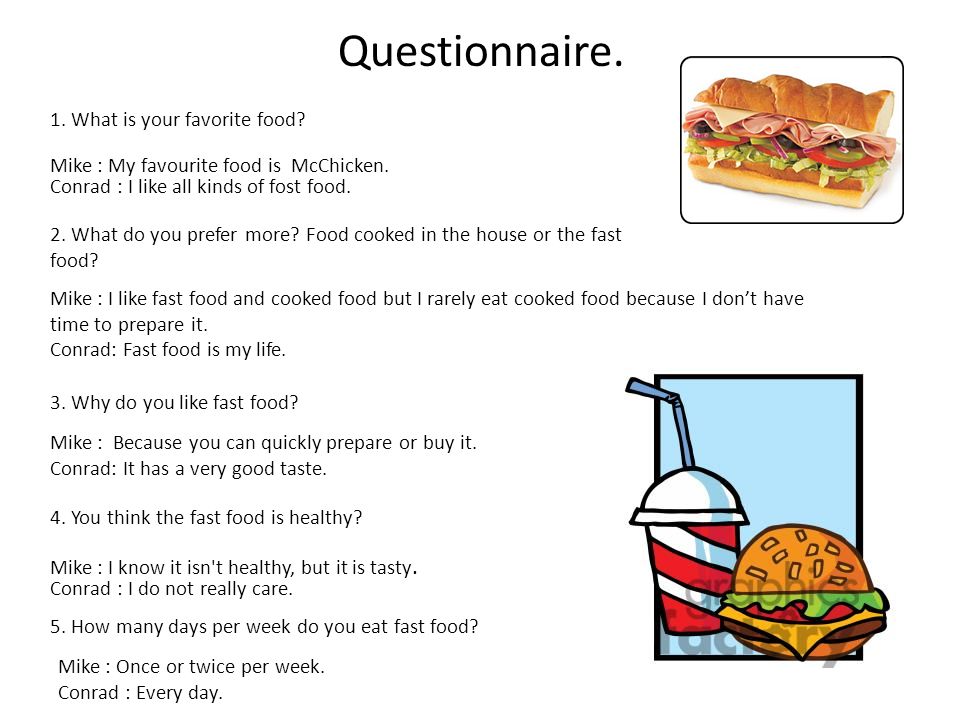
There is another question that often worries parents: is it permissible to preserve baby puree and how to do it correctly? After all, such complementary foods for the developing body of a small child must be prepared daily for one or even two or three years: until the baby is ready to eat adult food from the common table. Not every mother has the time and opportunity to prepare baby puree daily, but you don’t want to buy food for the baby in the store. In addition, it is obvious that in the winter-spring period it is almost impossible to find fruits and vegetables grown without the addition of chemicals. The answer to the question is quite simple: the requirements for the conditions for preparing baby food are very strict (keeping the temperature, sterilizing jars, etc.), but using an autoclave solves all problems: all that is required is to load jars with blanks into the autoclave for 20 minutes and set temperature 120 degrees. After cooling, it is better to store baby food in a dark, cool place for about 12 months, daily delighting the child with homemade homemade food.
Pumpkin puree: tender and aromatic
Pumpkin is a tasty vegetable that is good for babies. This fruit has a beneficial effect on digestion, is well absorbed by the child's body and is rich in various vitamins: A, C, B, B2, E, PP, T. In addition, the carotene content in pumpkin is 5 times higher than in carrots!
Baby pumpkin puree has a sweet taste, so the kids eat this dish with great pleasure. For preparations, it is better to buy small whole pumpkins, as they usually taste better than large ones and are easier to peel.
- Rinse pumpkin well under running water, peel, cut in half, remove seeds.
- Then you need to cut the fruit into small cubes, put in a saucepan and pour water. Cooking time after boiling - 20 minutes. You can also steam pumpkin: it will retain more nutrients with the same cooking time.
- The next step is to beat the cooked pumpkin with a blender until the consistency of a gentle puree. If the dish turned out to be thick, add water or milk (milk mixture).

- Vegetable oil and salt are added to pumpkin puree to taste, but these additives should be used with caution: only if they are acceptable for the age of the child.
For babies older than 8 months, pumpkin puree is supplemented with other fruits and vegetables, and also added to porridge.
Broccoli puree: simplicity and elegance
Broccoli is not just cabbage, but a storehouse of vitamins and microelements! Beautiful on the outside and fantastic on the inside - the high content of protein and vitamin C (there is more in broccoli than in citrus!) deserves special attention. There are many articles on the Internet about the benefits of broccoli, and preparing this product is not at all difficult.
To prepare this type of cabbage for baby food, you need to choose the highest quality product: the inflorescences must be unopened, green, moderately elastic.
- Broccoli should be washed, cut into pieces and boiled. Steaming will take 20 minutes, in water - faster: fresh cabbage should be boiled for a little more than 5 minutes, and frozen - at least 10.
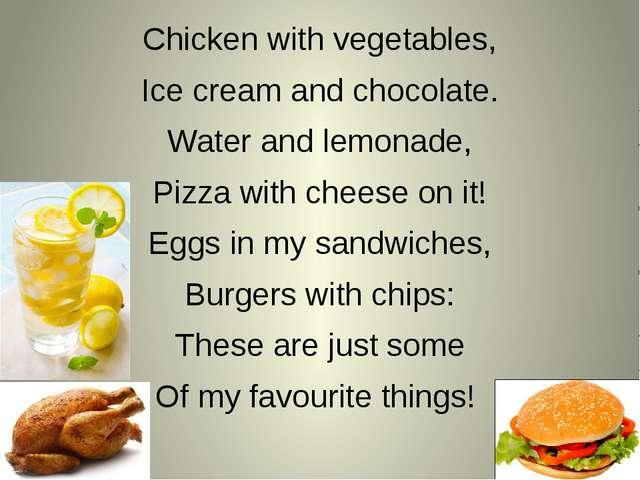 When cooking, do not pour a lot of water, it should only cover the vegetables a little.
When cooking, do not pour a lot of water, it should only cover the vegetables a little. - When the cabbage is cooked, it must be taken out, put into a blender bowl and chopped to a puree state, add a little warm boiled water.
- Add salt and butter to taste.
Pear puree: a fragrant dessert
It's no secret that babies love fruit puree - almost all children like sweet dishes. The pear is a suitable option for the first one-component fruit food - a sweet fragrant fruit that has a high concentration of vitamins, stimulates digestion and almost never causes allergies.
If you want to cook a safe puree for your child at home, then it is best to choose green pears, these are the fruits that are considered to be the least allergenic.
- Fruit must be peeled, core removed with seeds, cut into cubes.
- Transfer the pear to a heavy-bottomed enamel saucepan, add a little water and simmer over low heat for 15-20 minutes.

- Then transfer to a blender bowl and puree until smooth. If the puree is too thick, add a little warm boiled water.
- You can dilute the dish with milk or formula - it depends on the taste preferences of the baby.
A similar recipe is used for applesauce. In the future, try to combine these two fruits in one dish.
Classic apple-zucchini puree
A good appetite of a baby pleases every mother, but little gourmets are often capricious, and it is not easy to please them. Zucchini and apple puree is a classic combination of products that will diversify the baby's menu already in the fifth or sixth month of life.
This complementary food contains only hypoallergenic products, has a positive effect on the functioning of the heart, and stimulates the strengthening of the immune system.
- Selected products should be thoroughly washed, peeled, core removed from apples.
- Cut zucchini and apples into cubes, put fruits in a cooking pot first - they should cook for 5 minutes longer, and then vegetables.
 The total cooking time is 20 minutes.
The total cooking time is 20 minutes. - When the food becomes soft, it must be ground to a puree with a blender.
- To taste - dilute with water, add salt, oil.
This puree can be considered an independent dish for the little ones or become a delicious side dish for older kids.
Colorful carrot-potato puree
For many parents, carrots and potatoes are the simplest and most understandable type of complementary food for the baby. However, if you cook and serve standard products a little differently than usual, you can improve the traditional taste of a classic dish.
Young potatoes should not be chosen for baby puree - they contain a lot of starch. Carrots, on the contrary, it is better to buy young ones.
- Wash and peel the vegetables thoroughly and cut into cubes.
- Mashed potatoes are best steamed, vegetables should be boiled separately. Cook until tender, 20 minutes on average.
- Separately puree the vegetables in a blender, diluting with warm water if necessary.

Both types of puree are beautifully placed on a plate without mixing: the child can decide for himself whether to mix food or eat separately.
Exotic variety: mango puree
Tropical fruits should not be offered to a small child before 7-8 months and only if there was no allergy to other products.
Mango is an aromatic fruit with an original pleasant taste. This fruit helps to overcome colds, reduce inflammation in the body, improve sleep and normalize the functioning of the stomach.
To feed the baby, ripened fruits should be selected - quite soft, yellow-red in color.
- Fruit should be peeled and pitted, cut into cubes.
- Raw mango put in a blender, puree, transfer to a heavy-bottomed saucepan and boil for a few minutes.
Older children may be offered uncooked mango puree. This fruit is completely independent - no need to add sugar or water!
Sweet pumpkin puree with apple
This puree is called sweet, since both pumpkin and apples are foods with sufficient sugar content. Such a dish is well suited as a dessert for children who already eat “serious” food well - vegetable purees and cereals.
Such a dish is well suited as a dessert for children who already eat “serious” food well - vegetable purees and cereals.
In addition, such complementary foods are an excellent option for the autumn-winter period: seasonal products contain enough choline, a lot of fiber, natural proteins and vitamins (groups A, B, C, E, etc.), zinc, sodium, calcium and only!
- Pumpkins and apples need to be peeled, peeled and seeds removed, cut into cubes and sent to a double boiler.
- Cook for about 20 minutes until the food is soft. Then place them in a blender bowl, add raisins and chop. If the child chews well, mash everything with a fork, and leave the raisins whole.
Hearty puree with celery and turkey
For older kids, meat is added to vegetable dishes - turkey fillet is an excellent option for developing a child's taste preferences. Appetizing and fragrant meat puree includes only three ingredients: celery root, turkey fillet, butter.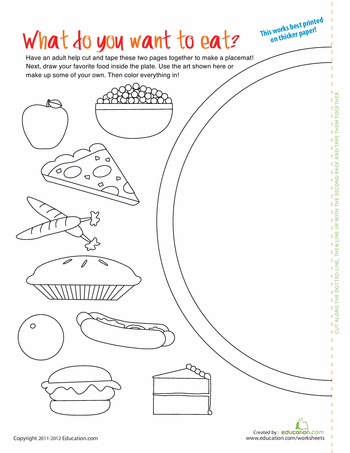
The proportion of meat and celery should be approximately 10:1, the amount of butter to your taste.
- Turkey fillets should be boiled in the "second stock" for about 20 minutes after boiling.
- Wash, peel and cut the celery root into cubes and put into the boiling broth 10 minutes before it is done.
- After cooking, puree the turkey and celery with a blender, adding stock if necessary.
- Salt to taste and add oil. For one children's serving, 3-5 grams of butter is enough.
A child from early childhood will begin to get used to full homemade food without the addition of preservatives and harmful components, and will grow up healthy and strong. In summer and autumn, parents can make preparations: prepare potatoes, carrots, beets, pumpkins and apples for storage (these products are stored for a long time - they do not need to be frozen), freeze berries and seasonal fruits, or roll ready-made mashed potatoes into jars! Homemade baby food without unnecessary flavor enhancers and salt is the best complementary food, warmed by mom's love.



